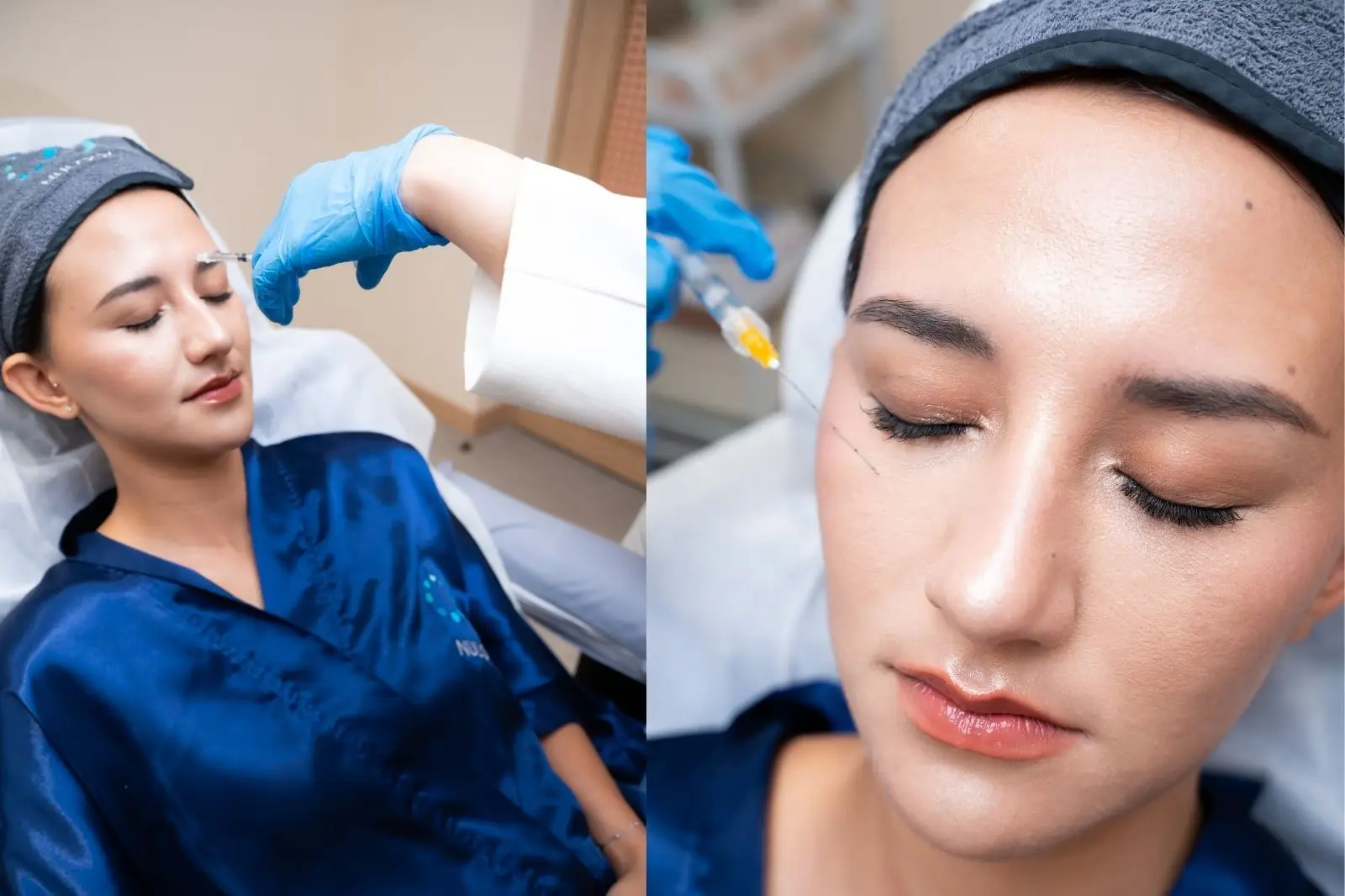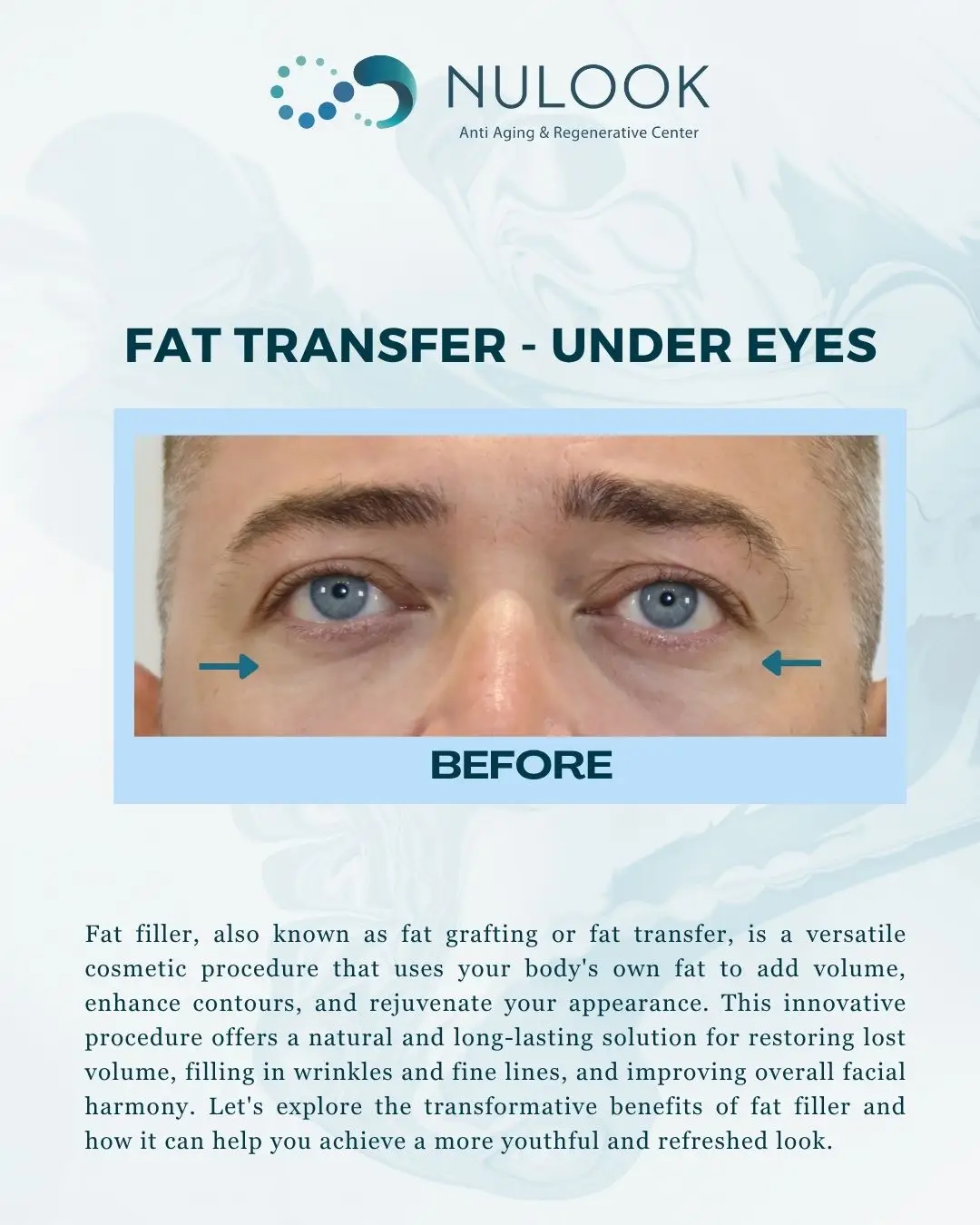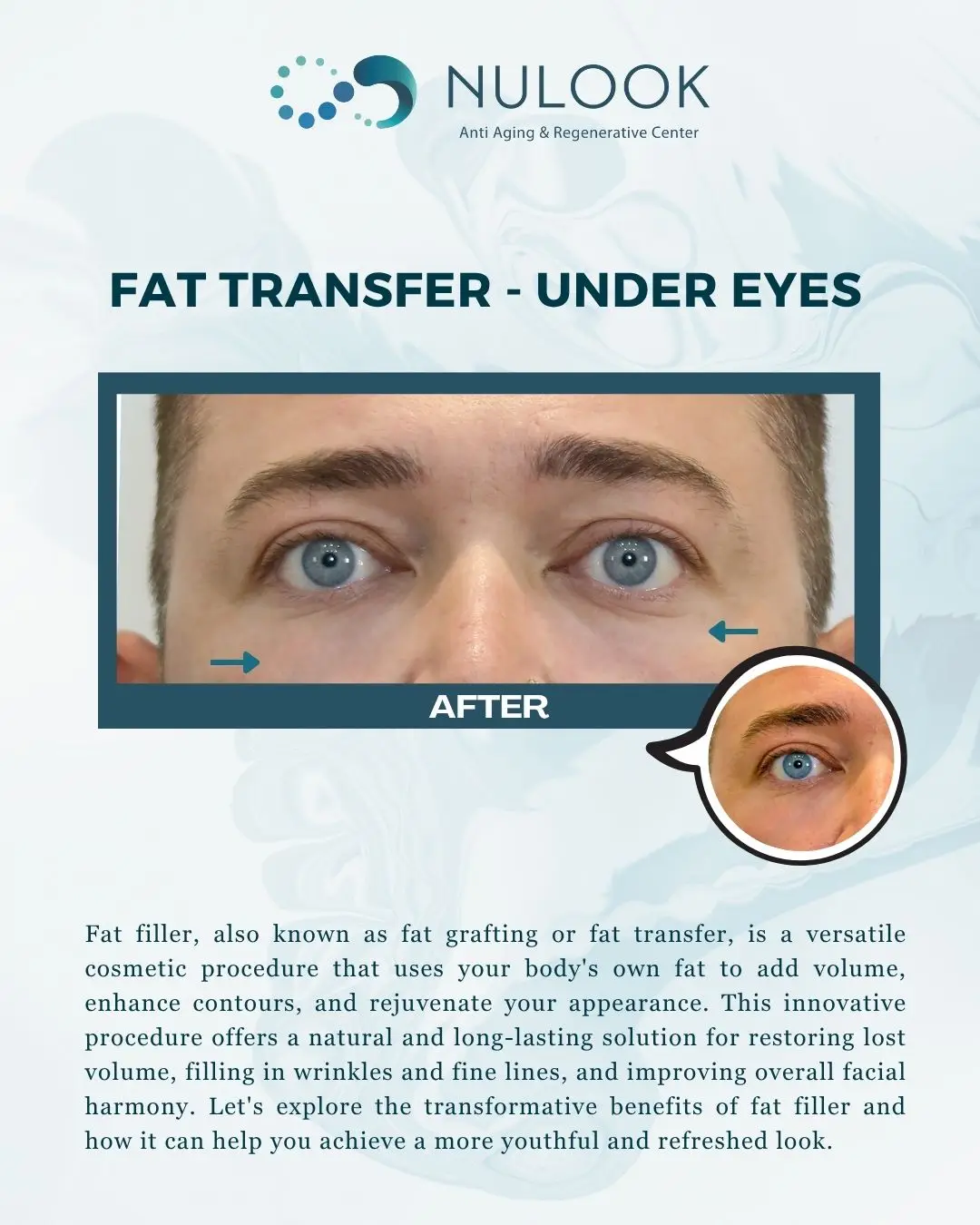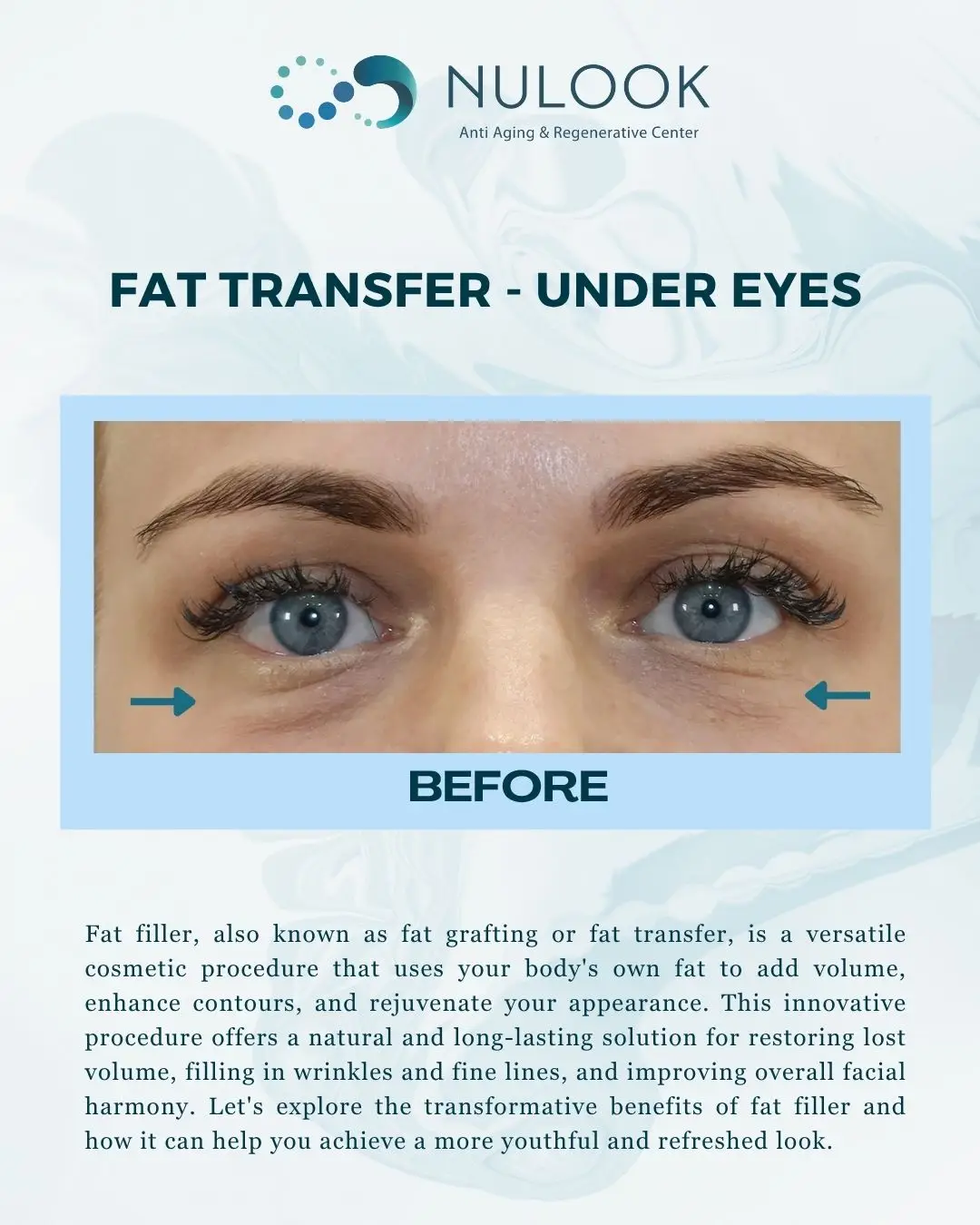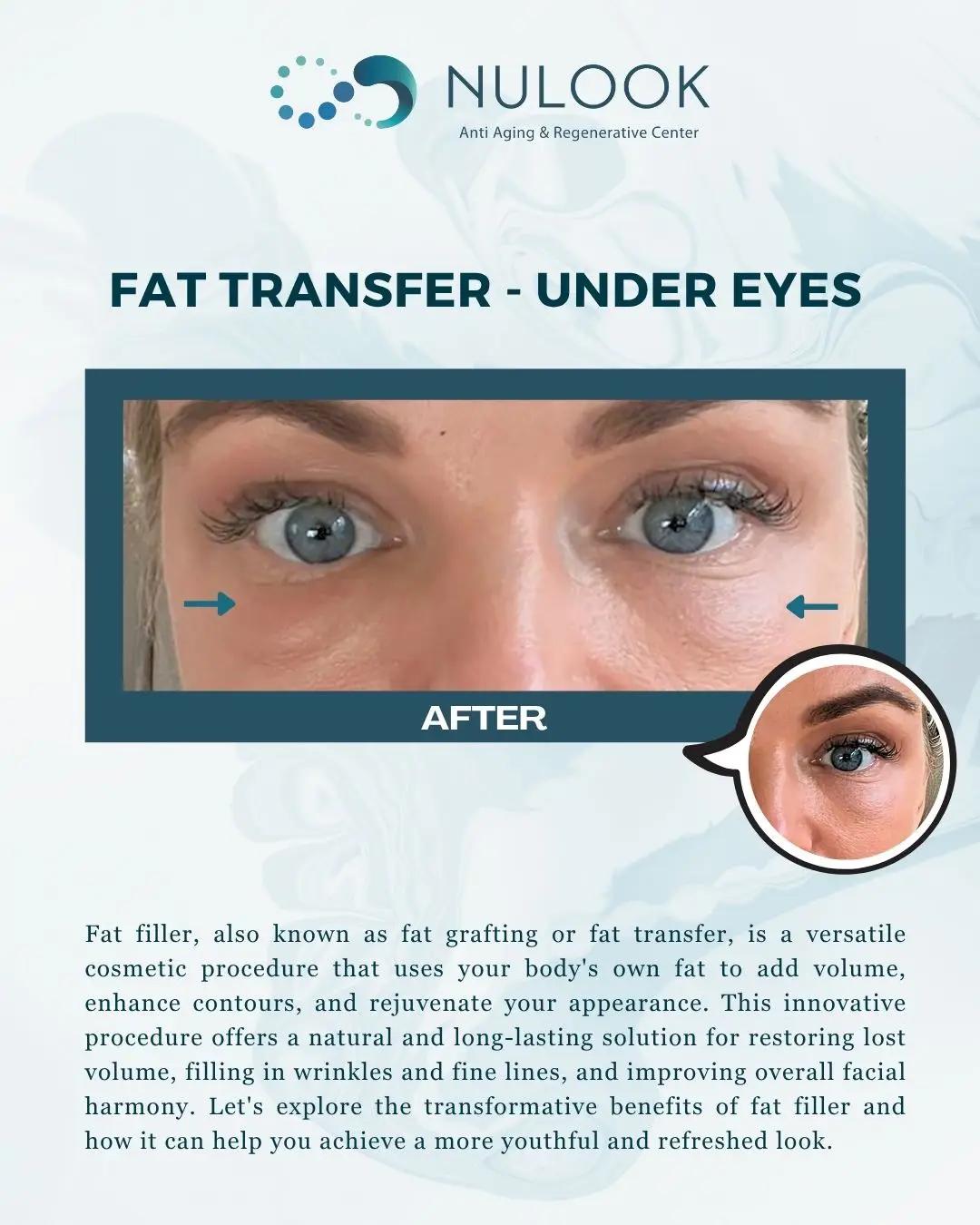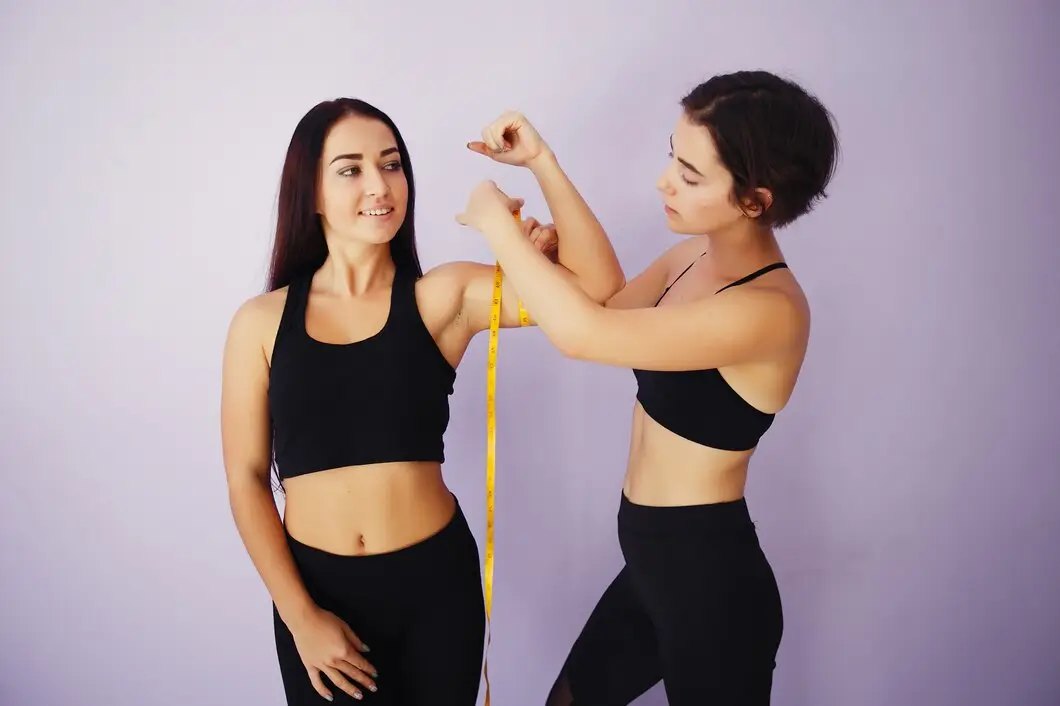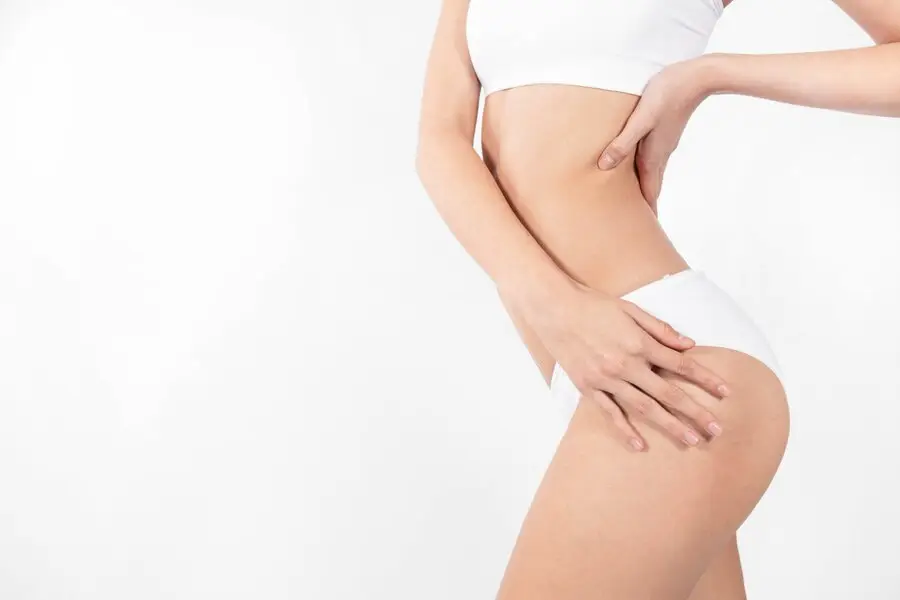Facial Fat Transfer Bali
Penulis: Administrator28/03/2024Fat Filler, juga dikenal sebagai pengisian lemak atau transfer lemak, adalah prosedur kosmetik serbaguna yang menggunakan lemak tubuhmu sendiri untuk menambah volume, meningkatkan kontur, dan memperbarui penampilan kamu.
Prosedur inovatif ini menawarkan solusi alami dan tahan lama untuk mengembalikan volume yang hilang, mengisi kerutan dan garis halus, serta meningkatkan harmoni wajah secara keseluruhan.
Mari kita jelajahi manfaat transformatif Fat Filler dan bagaimana hal itu dapat membantumu mencapai penampilan yang lebih muda dan segar.
Tujuan Fat Filler
Fat filler dirancang untuk berbagai kebutuhan estetika dan rekonstruksi dengan beberaoa tujuan, seperti:
1. Mengembalikan Volume yang Hilang Akibat Penuaan
Seiring bertambahnya usia, tubuh mengalami perubahan alami, termasuk berkurangnya lemak subkutan di area tertentu, seperti pipi, sekitar mata, dan bibir. Kehilangan volume ini menyebabkan wajah terlihat cekung, keriput, dan kehilangan kekencangan, yang memberikan kesan penuaan.
Dengan prosedur fat filler, lemak tubuh yang diambil dari area donor seperti perut atau paha diproses dan disuntikkan kembali ke area wajah yang membutuhkan. Proses ini tidak hanya mengembalikan volume yang hilang tetapi juga memberikan efek pengencangan kulit. Hasilnya adalah wajah yang terlihat lebih muda, segar, dan penuh vitalitas.
2. Mengisi Kerutan, Garis, dan Lipatan Dalam
Kerutan dan garis wajah, seperti garis senyum, kerutan di dahi, atau lipatan nasolabial, adalah tanda-tanda penuaan yang paling umum. Prosedur fat filler sangat efektif untuk mengatasi masalah ini karena lemak yang disuntikkan mampu mengisi area cekung yang menyebabkan kerutan.
Tidak seperti filler sintetis, lemak tubuh memiliki kelebihan karena sifatnya yang alami dan kemampuannya untuk menyatu dengan jaringan sekitarnya. Hal ini menghasilkan tampilan kulit yang halus, kencang, dan lebih muda secara keseluruhan, tanpa memberikan kesan "berlebihan" yang sering kali menjadi kekhawatiran pasien.
3. Meningkatkan Kontur Wajah
Banyak orang menginginkan bentuk wajah yang lebih tegas dan terdefinisi. Fat filler dapat membantu meningkatkan kontur wajah dengan mempertegas area seperti pipi, dagu, dan garis rahang. Prosedur ini memberikan hasil yang lebih natural dibandingkan dengan implan atau prosedur bedah lainnya.
4. Memperbaiki Bekas Luka pada Kulit
Selain untuk keperluan estetika, fat filler juga memiliki manfaat dalam perbaikan kulit, terutama bagi mereka yang memiliki bekas luka cekung atau depresi akibat jerawat atau cedera. Dengan menyuntikkan lemak tubuh ke area bekas luka, permukaan kulit menjadi lebih rata, dan tekstur kulit terlihat lebih sehat.
5. Menambah Volume pada Area Tubuh Lain
Keunggulan lain dari fat filler yaitu fleksibilitasnya untuk digunakan di berbagai bagian tubuh, tidak hanya wajah. Prosedur ini sering kali digunakan untuk menambah volume pada tangan, payudara, dan bokong.
Manfaat Fat Filler
Fat filler memiliki sejumlah keunggulan yang membuatnya menjadi salah satu prosedur estetika yang banyak diminati. Berikut beberapa manfaat utamanya:
1. Hasil yang Alami
Karena menggunakan lemak tubuh sendiri, hasil yang didapatkan sangat alami. Lemak yang disuntikkan menyatu dengan jaringan tubuh, sehingga dapat menciptakan penampilan yang harmonis tanpa terlihat seperti buatan.
2. Risiko Alergi yang Minimal
Tidak seperti pengisi sintetis yang berpotensi menimbulkan reaksi alergi, fat filler memiliki risiko yang sangat kecil karena bahan yang digunakan berasal dari tubuh pasien sendiri. Ini memberikan keamanan tambahan bagi kamu yang sensitif terhadap bahan kimia tertentu.
3. Manfaat Ganda dari Liposuksi
Proses pengambilan lemak dilakukan melalui liposuksi. Selain membantu meningkatkan volume di area target, pasien juga mendapatkan manfaat tambahan berupa pembentukan tubuh di area donor seperti perut, paha, atau pinggul.
4. Hasil yang Tahan Lama
Meskipun sebagian lemak yang disuntikkan dapat diserap kembali oleh tubuh, sisanya tetap bertahan untuk waktu yang lama. Dengan perawatan yang tepat, hasil ini dapat bertahan selama bertahun-tahun, menjadikan prosedur ini sebagai investasi yang ekonomis.
Fleksibilitas dalam Penggunaan
Prosedur fat filler tidak hanya terbatas pada wajah tetapi juga dapat digunakan di berbagai bagian tubuh lainnya seperti tangan, payudara, dan bokong. Ini menjadikannya salah satu prosedur estetika yang paling serbaguna.
Prosedur Fat Filler
Prosedur ini terdiri dari tiga langkah utama yang dilakukan dengan hati-hati untuk memastikan hasil terbaik:
1. Memanen Lemak
Lemak diambil dari area donor seperti perut, paha, atau pinggul menggunakan metode liposuction. Area donor dipilih berdasarkan kebutuhan dan jumlah lemak yang tersedia.
2. Pemrosesan Lemak
Lemak yang telah dipanen diproses menggunakan teknik khusus untuk memisahkan sel lemak murni dari cairan tubuh dan kotoran lainnya. Hanya sel lemak berkualitas tinggi yang akan digunakan dalam proses injeksi.
3. Injeksi ke Area Target
Lemak yang telah diproses disuntikkan ke area target menggunakan alat khusus seperti kanula atau kateter tipis. Proses ini dilakukan secara hati-hati dan bertahap untuk memastikan distribusi lemak yang merata dan hasil yang optimal.
Pemulihan dan Perawatan Pascaoperasi
Pemulihan dari treatment fat filler umumnya berlangsung cepat, tetapi perawatan setelah operasi sangat penting untuk memastikan hasil yang maksimal. Berikut beberapa tips perawatan pascaoperasi:
- Menghindari Aktivitas Berat: Hindari aktivitas fisik yang berat selama beberapa hari setelah prosedur untuk memberi waktu bagi tubuh untuk pulih.
- Perlindungan dari Sinar Matahari: Gunakan tabir surya dan hindari paparan langsung sinar matahari untuk melindungi kulit dari kerusakan.
- Menghindari Merokok: Merokok dapat memperlambat proses penyembuhan dan memengaruhi hasil prosedur. Oleh karena itu, disarankan untuk tidak merokok selama masa pemulihan.
- Konsultasi dengan Dokter: Pastikan untuk menghadiri semua janji temu tindak lanjut dengan dokter kamu. Ini penting untuk memantau perkembangan hasil dan menangani potensi masalah.
- Mengelola Pembengkakan dan Memar: Beberapa pembengkakan dan memar adalah hal yang normal setelah prosedur. Gunakan kompres dingin dan obat pereda nyeri sesuai rekomendasi dokter untuk membantu mengatasi gejala ini.
Jadwalkan Fat Filler di Nulook Sekarang Juga
Fat filler menawarkan solusi alami dan tahan lama untuk meningkatkan penampilanmu dan mencapai penampilan yang lebih muda dan segar. Baik kamu ingin mengembalikan volume yang hilang, mengisi kerutan dan garis halus, atau meningkatkan kontur wajah, fat filler dapat membantumu mencapai tujuan estetismu.
Konsultasikan dengan ahli bedah plastik bersertifikat di klinik yang tepercaya untuk mempelajari lebih lanjut tentang Fat Filler dan bagaimana hal itu dapat memberi manfaat bagi kamu .
Dengan keberadaan perawatan seperti fat filler dan fat graft Bali dari Nulook, kini kamu memiliki akses ke solusi modern untuk memperbaiki volume wajah dan mengatasi tanda-tanda penuaan. Dengan berkonsultasi dengan para ahli di Bali yang terampil dalam prosedur ini, kamui dapat memperoleh penampilan yang lebih segar dan mempesona.
Disclaimer
Hasil perawatan dapat bervariasi pada setiap individu, tergantung pada kondisi kulit, riwayat kesehatan, gaya hidup, serta berbagai faktor lainnya. Seluruh foto “sebelum & sesudah” (before-after) yang ditampilkan merupakan contoh ilustrasi dan tidak menjamin hasil yang sama bagi setiap pasien. Informasi yang tercantum di website ini bertujuan sebagai edukasi umum dan bukan pengganti konsultasi medis profesional. Silakan lakukan konsultasi langsung dengan dokter atau tenaga medis berlisensi di klinik kami.
Jangan ragu untuk menjadwalkan perawatan fat filler atau fat graft Bali untuk mencapai hasil yang alami dan menonjol, serta untuk merasakan keindahan pulau ini sambil meningkatkan kepercayaan diri kamu.





